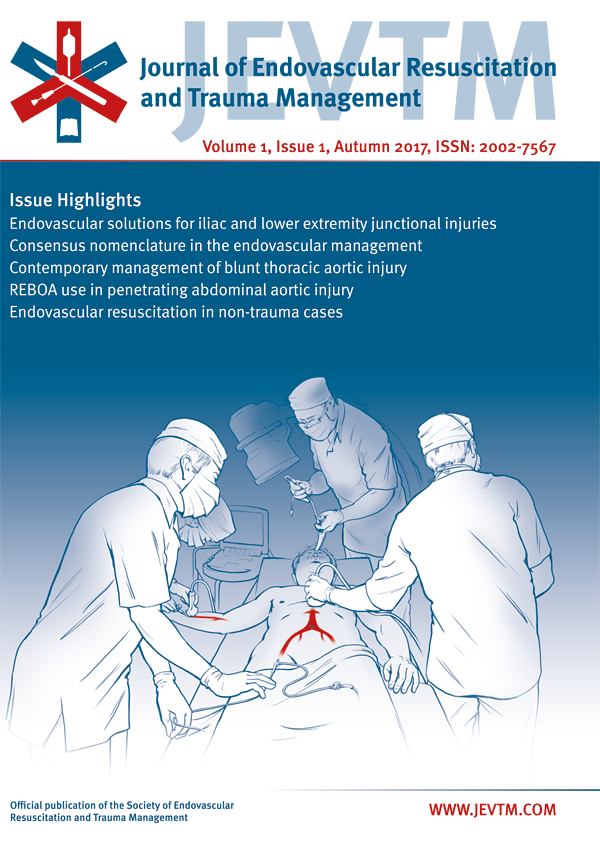Practice Preferences using Resuscitative Endovascular Balloon Occlusion of the Aorta for Traumatic Injury Before and After the 2017 EndoVascular and Hybrid Trauma and Bleeding Management Symposium
DOI:
https://doi.org/10.26676/jevtm.v1i1.13Keywords:
Trauma, Endovascular, REBOA, Practice PatternsAbstract
Background: Resuscitative endovascular balloon occlusion of the aorta (REBOA) is a technique to aid in resuscitative eff orts for hemorrhagic shock. The use of REBOA is not yet commonplace and there is little understanding of real-world practice patterns. The Endovascular and Hybrid Trauma and Bleeding Management Symposium is a large international conference specifically developed to discuss multidisciplinary, endovascular and hybrid approaches to hemorrhage management. We sought to evaluate provider opinions and practice patterns using REBOA for traumatic vascular injury before and after attending this conference.
Methods: A detailed survey was completed by a variety of providers before and after the conference. The survey was composed of demographic information, and focused on practice patterns and opinions regarding the implementation of REBOA.
Results: We received 186 survey responses (99 pre, 87 post). There was increased perception of feasibility for REBOA in all settings, with the largest increase for pre-hospital and austere military environments (53.5% pre, 67.8% post and 59.6% pre, 73.6% post respectively). While there was no consensus on tolerable occlusion times and indications for utilization, most participants felt that partial REBOA was the most viable technique for prolonging the benefi ts of REBOA, and more participants came to this conclusion after attending the conference (62.2% pre, 81.6% post, p = 0.006).
Conclusions: REBOA is an exciting and important advancement in the management of life threatening hemorrhage; however, its implementation has not been codifi ed and there is much variation in practitioners’ understanding of its use. Continued investigation is needed to determine the appropriate indications, methods, and practical limitations of REBOA as a new hemorrhage management paradigm.
Published
How to Cite
Issue
Section
License
Copyright (c) 2017 Journal of Endovascular Resuscitation and Trauma Management

This work is licensed under a Creative Commons Attribution 4.0 International License.
Authors of content published in the JEVTM retain the copyright to their works.
Articles in the JEVTM are published under the terms of a Creative Commons CC BY 4.0 license, which permits use, downloading, distribution, linking to and reproduction in any medium, provided the original work is properly cited.




